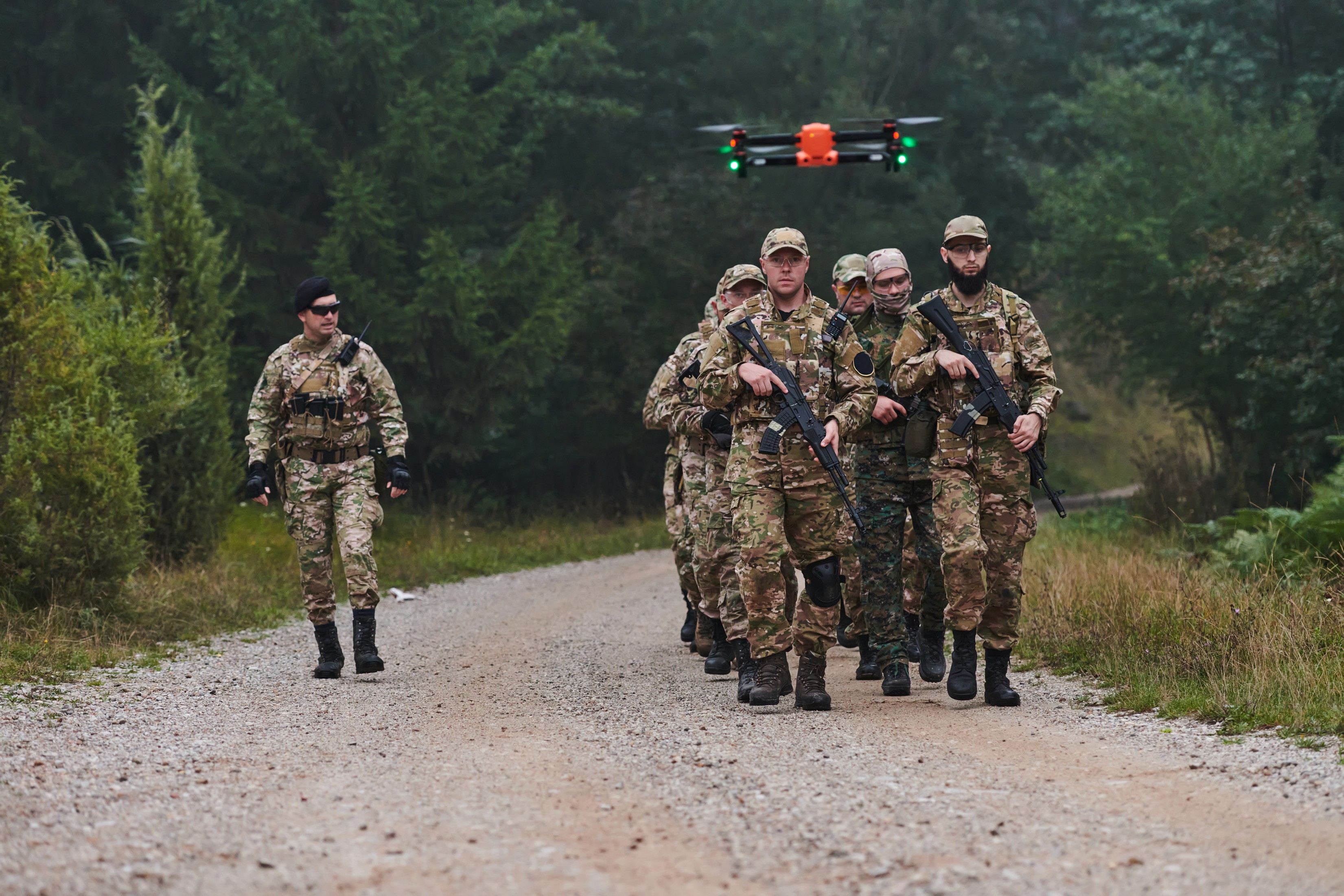Reconnaissance Drones and Aircraft – Aerial Surveillance Redefined for Modern Defense

In the fast-evolving landscape of modern military operations, the ability to gather real-time intelligence from the sky has become indispensable. Reconnaissance drones and aircraft are at the forefront of this capability, providing military forces with critical intelligence that informs decision-making, tactical planning, and battlefield operations. From unmanned aerial vehicles (UAVs) that operate autonomously to high-altitude surveillance aircraft capable of covering vast areas, these platforms are revolutionizing the way military forces observe, track, and respond to threats.
Reconnaissance drones and aircraft enable persistent surveillance, long-range reconnaissance, and real-time data collection, offering military commanders a comprehensive view of the battlespace. Whether they are monitoring enemy movements, identifying targets, or assessing damage from an aerial vantage point, these platforms have become the cornerstone of modern intelligence, surveillance, and reconnaissance (ISR) operations.
In this blog, we will explore the evolution of reconnaissance drones and aircraft, the advanced technologies that power them, their role in modern defense strategy, and how AiDOOS is supporting the development of cutting-edge ISR platforms for defense organizations.
The history of aerial reconnaissance dates back to World War I, when manned aircraft were first used to gather intelligence on enemy positions. However, it wasn’t until World War II and the Cold War that reconnaissance aircraft became integral to military operations, with platforms such as the Lockheed U-2 and the SR-71 Blackbird pushing the limits of high-altitude surveillance.
While manned reconnaissance aircraft played a critical role during the Cold War, the introduction of unmanned aerial vehicles (UAVs) marked a major turning point in the evolution of aerial surveillance. UAVs, commonly known as drones, offered the ability to conduct persistent surveillance missions without risking the lives of pilots, while also enabling operations in highly contested environments.
During the 1990s, drones like the RQ-1 Predator became widely used by the U.S. military, particularly for intelligence gathering in conflict zones such as Afghanistan and Iraq. Today, drones like the MQ-9 Reaper are capable of not only surveillance but also strike operations, combining ISR capabilities with precision weaponry. In addition, high-altitude, long-endurance (HALE) platforms such as the Northrop Grumman RQ-4 Global Hawk provide continuous coverage of large geographic areas for intelligence, surveillance, and reconnaissance (ISR) operations.
As technology continues to advance, modern reconnaissance platforms are now equipped with sophisticated sensors, data processing capabilities, and AI-driven analytics, making them indispensable in military operations across all domains.
Reconnaissance drones and aircraft rely on cutting-edge technologies that enable them to gather, process, and transmit real-time intelligence over vast areas of operation. These platforms are equipped with advanced sensors and data systems that provide military commanders with critical information. Below are some of the key technologies powering modern reconnaissance drones and aircraft:
Electro-Optical (EO) and Infrared (IR) Sensors: EO and IR sensors are essential for aerial surveillance, allowing drones and aircraft to capture high-resolution imagery and video in both visible and infrared spectrums. EO sensors are widely used for daytime reconnaissance, while IR sensors are used to detect heat signatures at night or in low-visibility conditions. These sensors enable drones and aircraft to monitor enemy forces, identify targets, and assess damage after strikes.
Synthetic Aperture Radar (SAR): SAR technology is used in many reconnaissance aircraft and drones to create high-resolution radar images of the Earth’s surface, even through clouds, smoke, and foliage. SAR is particularly useful in all-weather and nighttime surveillance missions, providing continuous coverage in conditions where optical sensors are limited. SAR is widely used in battlefield surveillance, border protection, and maritime operations.
Signals Intelligence (SIGINT): SIGINT platforms equipped on reconnaissance drones and aircraft are capable of intercepting and analyzing enemy communications, radar signals, and electronic emissions. This intelligence is vital for identifying the location and capabilities of enemy forces, as well as for supporting electronic warfare (EW) operations. SIGINT-equipped drones and aircraft can collect and relay critical data in real-time, giving military commanders the intelligence they need to make informed decisions.
High-Altitude, Long-Endurance (HALE) and Medium-Altitude, Long-Endurance (MALE) Platforms: HALE and MALE drones, such as the Global Hawk and Predator, are designed to operate at high altitudes for extended periods, providing persistent surveillance over vast areas. These platforms are equipped with a range of sensors, including EO/IR and SAR, allowing them to conduct long-duration reconnaissance missions without refueling or returning to base.
Autonomous Systems and AI: Advances in artificial intelligence (AI) and machine learning (ML) are transforming the capabilities of reconnaissance drones and aircraft. AI-driven algorithms enable these platforms to process large amounts of data in real-time, identifying patterns, classifying objects, and detecting anomalies faster than human operators. Autonomous systems allow drones to carry out pre-programmed surveillance missions without constant human intervention, making them more efficient and adaptable to changing battlefield conditions.
Real-Time Data Processing and Transmission: Modern reconnaissance platforms are equipped with advanced data processing systems that enable the real-time transmission of intelligence to command centers. This is crucial for enabling fast decision-making in dynamic environments. Reconnaissance drones and aircraft can relay live video feeds, sensor data, and other intelligence directly to military commanders, allowing them to respond to threats or opportunities in real-time.
Stealth Technology: Some reconnaissance aircraft, such as the Lockheed Martin RQ-170 Sentinel, are equipped with stealth technology, allowing them to operate undetected in enemy airspace. Stealth capabilities are critical for missions that require deep penetration into hostile territory, ensuring that reconnaissance operations can be conducted without alerting enemy forces.
Reconnaissance drones and aircraft play a vital role in modern military operations by providing persistent surveillance, early warning, and real-time intelligence. These platforms support a wide range of defense missions, from battlefield reconnaissance to maritime surveillance and border security.
Persistent Surveillance: The ability to maintain continuous surveillance over areas of interest is one of the primary advantages of reconnaissance drones and aircraft. High-altitude drones can remain airborne for extended periods, providing military forces with real-time intelligence over large geographic areas. This persistence allows for continuous monitoring of enemy activities, critical infrastructure, and potential threats.
Battlefield Intelligence and Targeting: In fast-moving conflicts, reconnaissance platforms provide battlefield commanders with real-time intelligence on enemy troop movements, vehicle deployments, and tactical formations. This intelligence is essential for coordinating precision strikes and supporting ground forces. Reconnaissance drones equipped with laser targeting systems can also guide precision-guided munitions (PGMs) to their targets, ensuring greater accuracy and reducing collateral damage.
Border and Maritime Surveillance: Drones and aircraft are widely used for monitoring national borders and maritime regions, helping to detect illegal activities such as smuggling, illegal fishing, and unauthorized incursions. These platforms provide continuous coverage of vast areas, ensuring that critical infrastructure, coastlines, and maritime trade routes are protected.
ISR Support for Special Operations: Reconnaissance drones and aircraft are often deployed in support of special operations forces (SOF), providing real-time intelligence and surveillance before and during high-risk missions. These platforms are invaluable for monitoring enemy compounds, identifying threats, and providing early warning to special operations teams.
Damage Assessment and Battle Damage Repair: After military strikes, reconnaissance platforms are used to assess battle damage and evaluate the effectiveness of strikes. High-resolution imagery and SAR data help commanders determine the extent of damage to enemy infrastructure, vehicles, or personnel, enabling them to plan follow-up operations if needed.
While reconnaissance drones and aircraft are critical to modern military operations, there are several challenges and emerging trends that defense organizations must address to ensure their effectiveness in future conflicts.
Counter-Drone and Anti-UAV Technologies: As drones become more prevalent, adversaries are developing countermeasures to detect, track, and destroy UAVs. Anti-drone systems that use radar, jamming, and directed energy weapons are becoming more advanced, posing a significant threat to reconnaissance platforms. Developing stealthier drones and improving counter-countermeasures will be key to maintaining the effectiveness of reconnaissance UAVs.
Data Management and Analysis: Reconnaissance platforms generate vast amounts of data, much of which must be analyzed in real-time. Managing this data and turning it into actionable intelligence is a significant challenge for military forces. AI-driven analytics and machine learning algorithms are essential for automating data analysis and ensuring that critical intelligence is delivered to commanders without delay.
Cybersecurity Threats: The data collected and transmitted by reconnaissance drones and aircraft is highly sensitive, making these platforms a prime target for cyberattacks. Ensuring the cybersecurity of these systems is crucial for preventing adversaries from intercepting or tampering with intelligence data.
Swarming Technology: The concept of drone swarming is an emerging trend in ISR operations, where multiple drones operate together in coordinated formations to cover larger areas or conduct complex reconnaissance missions. Swarming technology can improve the efficiency of surveillance missions and provide redundancy in case one or more drones are compromised.
The development of advanced reconnaissance drones and aircraft requires expertise in sensor integration, autonomous systems, AI-driven analytics, and stealth technology. AiDOOS provides defense contractors with access to a global network of specialized talent, enabling them to accelerate the development of cutting-edge ISR platforms.
Whether it’s designing AI-powered reconnaissance systems, enhancing real-time data processing, or developing stealth capabilities for reconnaissance aircraft, AiDOOS connects defense organizations with the expertise they need to stay ahead of emerging threats and deliver the next generation of ISR solutions.
As military operations become more complex, the role of reconnaissance drones and aircraft will continue to evolve. AI, autonomous operations, and swarming technology will play a significant role in enhancing the capabilities of these platforms, making them more adaptable and capable of operating in contested environments.
At the same time, the growing threat of anti-UAV technologies will require the development of stealthier and more resilient reconnaissance systems. The future of ISR will depend on the ability of defense organizations to integrate these advanced technologies while ensuring that their platforms remain secure from cyber and electronic warfare threats.
Reconnaissance drones and aircraft are the backbone of modern ISR operations, providing military forces with the real-time intelligence they need to make informed decisions, protect critical assets, and conduct precision strikes. From battlefield reconnaissance to border surveillance, these platforms are essential for maintaining situational awareness in today’s fast-moving and complex operational environments.
By partnering with AiDOOS, defense contractors can accelerate the development of advanced reconnaissance platforms that leverage the latest technologies in AI, data processing, and sensor integration. As military operations continue to evolve, ensuring that reconnaissance drones and aircraft can operate effectively in contested environments will be critical to maintaining military superiority.

By redesigning packaging, exploring reusable models, investing in smart tracking, and leveraging the VDC model for execution, beverage manufacturers can reduce their environmental footprint while boosting their brand relevance and operational resilience.

Even the most capable in-house IT teams often fall short when it comes to minimizing downtime. While Managed Services solve much of the downtime problem, the VDC model supercharges it with flexibility, scalability, and domain-specific expertise.